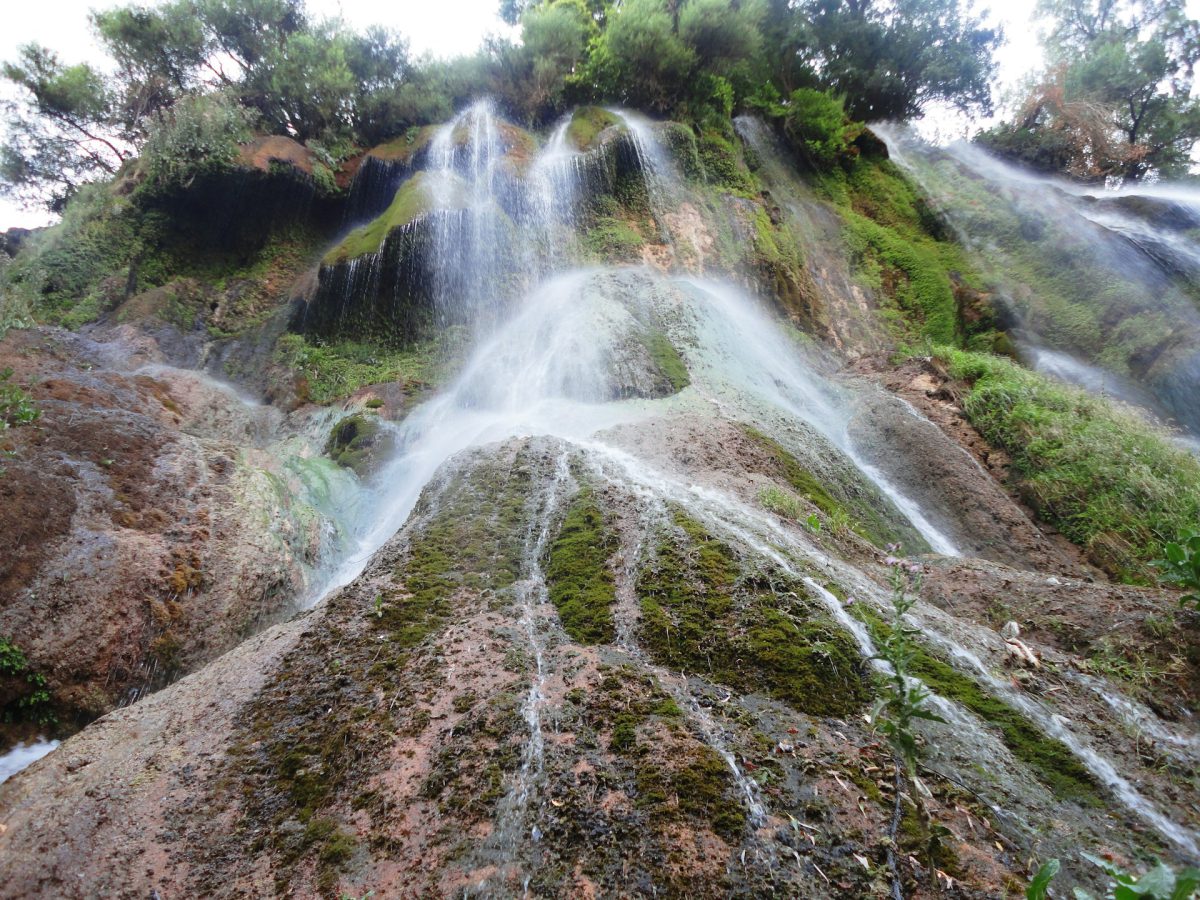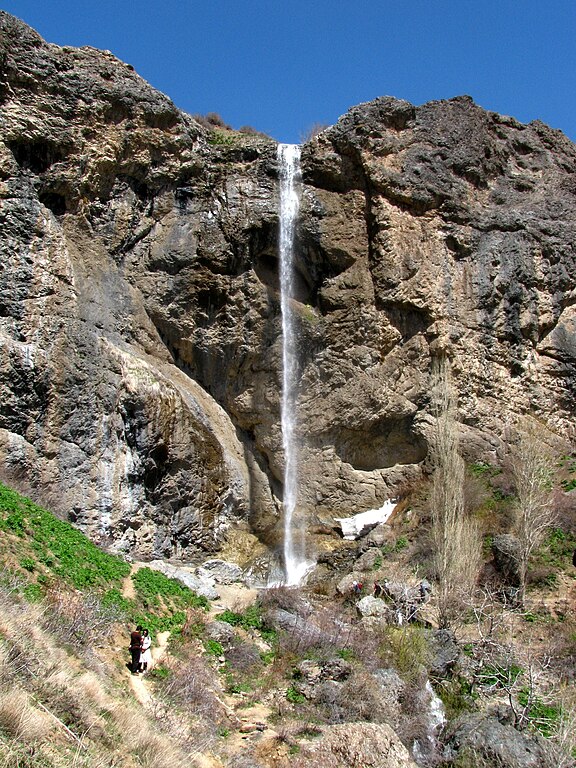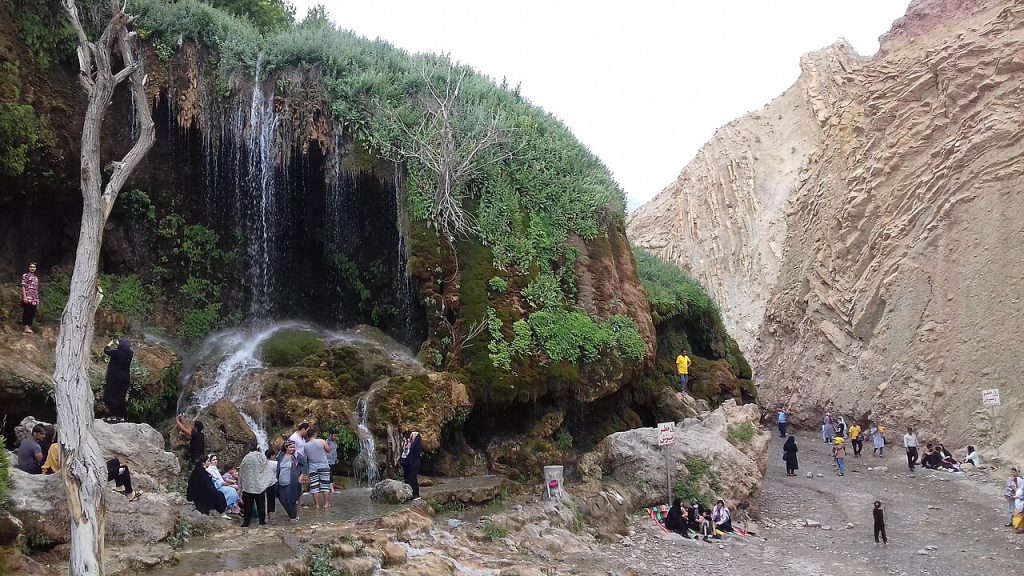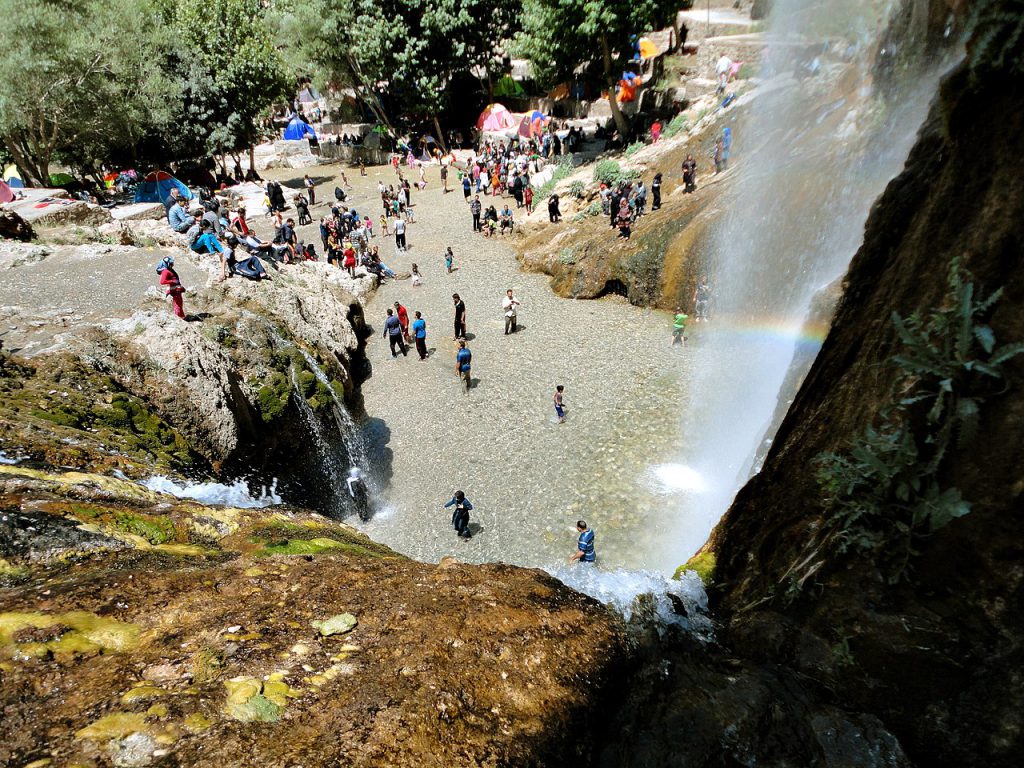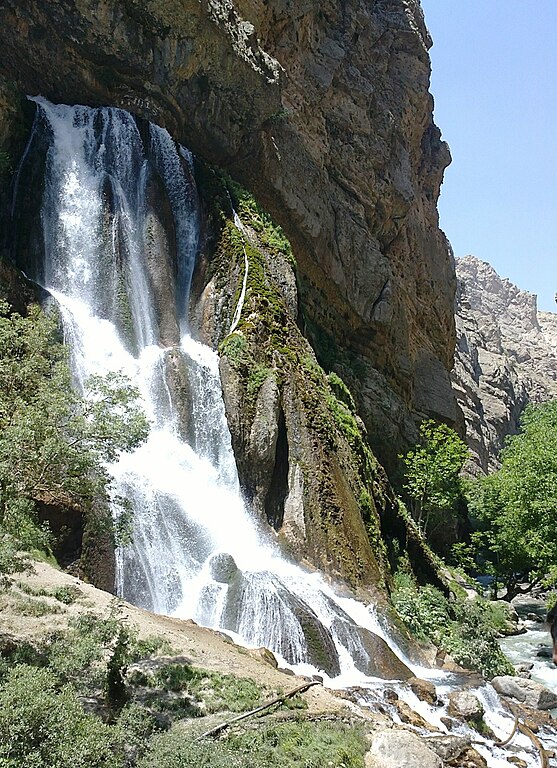Table of Contents
Waterfalls in Iran captivate visitors with their stunning beauty and calming sounds, providing an ideal escape from the heat and daily stresses. The soothing ambiance created by the cascading water invites you to unwind and reconnect with nature, offering a perfect retreat for those seeking tranquility. From the verdant landscapes of the north to the diverse regions spread across the country, each waterfall boasts its own unique charm. These natural wonders not only enhance the beauty of their surroundings but also present a breathtaking spectacle that leaves a lasting impression on all who visit.
Uncover the top ten most stunning waterfalls in Iran, each offering a refreshing escape for travelers. These natural wonders are scattered across the country, each one showcasing unique characteristics that make it a must-visit destination. From hidden gems in lush forests to grand cascades in mountainous regions, these waterfalls provide the perfect backdrop for adventure and relaxation. Immerse yourself in their beauty, and let the serene environment rejuvenate your spirit as you explore the diverse landscapes of Iran.
Margoon Waterfall
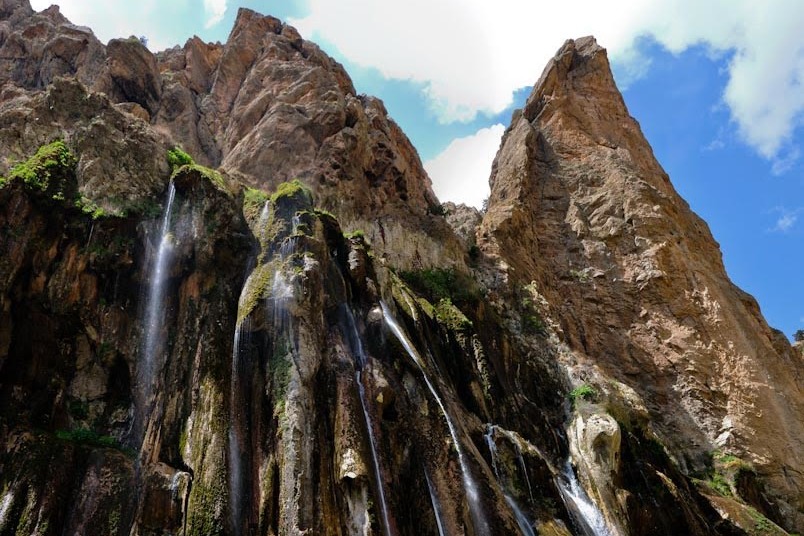
Located in the rugged mountains of Fars province in Sepidan county, Margoon Waterfall towers over 70 meters high, providing visitors with a paradisiacal retreat in a hot, mountainous landscape. When visiting Shiraz, including this stunning waterfall in your itinerary ensures an unforgettable experience, as the cascade creates a refreshing oasis contrasting sharply with its arid surroundings.
The name “Margoon” translates to “snake-like,” capturing the waterfall’s sinuous, graceful flow. Recognized for its breathtaking beauty, Margoon is one of the best waterfalls in Iran and is also featured on National Geographic’s list of Iran’s Most Wild and Beautiful Places, solidifying its status as a must-see natural wonder.
Laton Waterfall
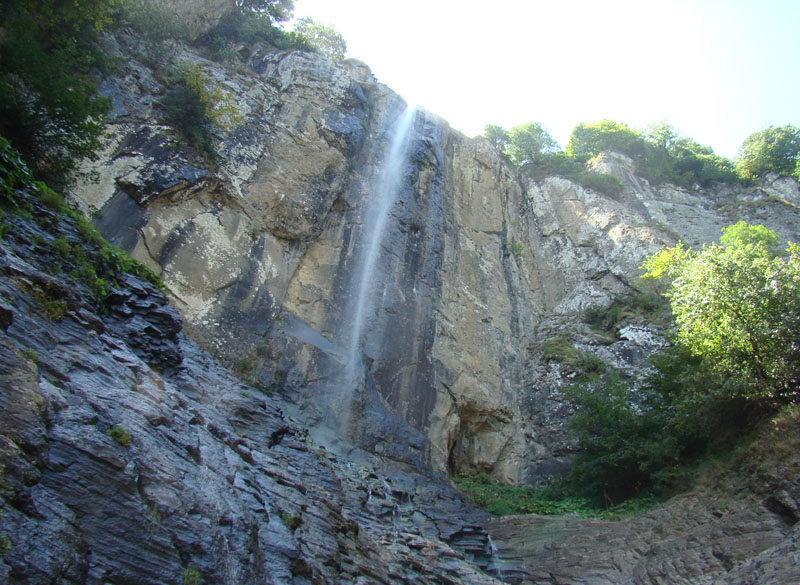
Nestled in the lush landscapes of Gilan Province, Laton Waterfall reigns supreme as Iran’s tallest cascade, plummeting an impressive 105 meters from its rocky perch. This awe-inspiring spectacle of nature beckons adventurers to venture 15 kilometers south of Astara, where the quaint village of Kootah Komeh serves as a gateway to this hidden gem.
The journey to Laton is an experience in itself, with a 6-kilometer trek from Kootah Komeh that winds through a tapestry of forested hills and refreshing springs. As you approach the waterfall, you’ll find yourself enveloped by one of Gilan’s most unspoiled forests, a verdant paradise where almond, hazelnut, wild apple, walnut, and pear trees stand as silent sentinels, their branches extending a natural welcome to intrepid visitors. This diverse ecosystem not only provides a feast for the eyes but also serves as a habitat for various wildlife, including wolves, hogs, and hedgehogs, adding an element of wild charm to the already captivating landscape.
Bisheh Waterfall
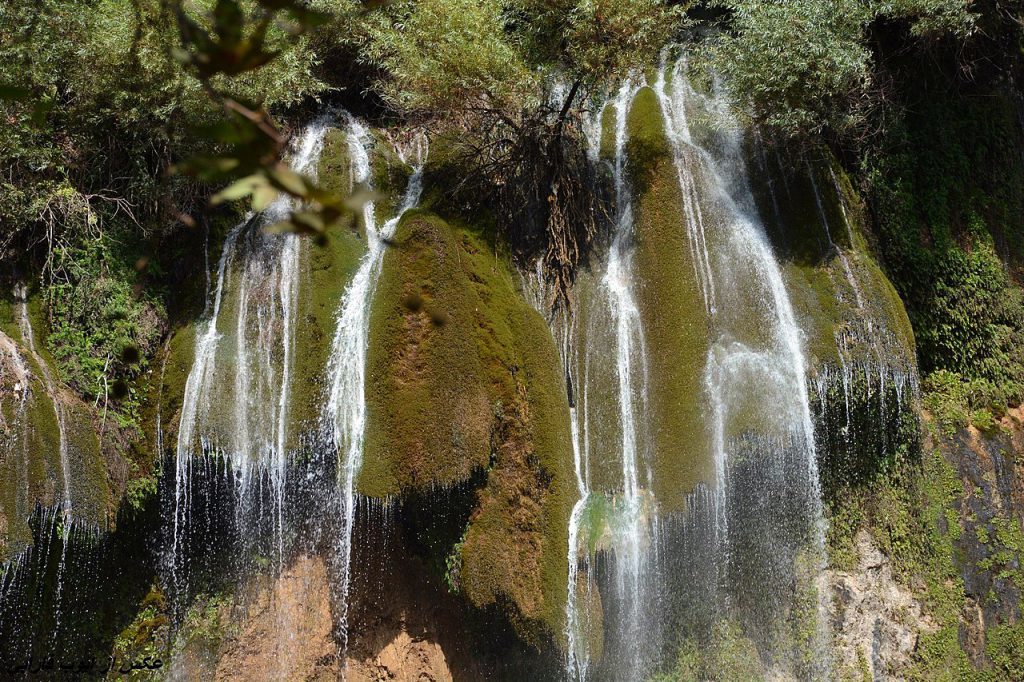
Deep within the heart of the Zagros Mountains, Bisheh Waterfall cascades gracefully, creating a mesmerizing spectacle in Lorestan Province. Standing 48 meters tall and 10 meters wide, this natural wonder is located 65 kilometers from Khorramabad and is easily accessible via the Tehran-south railway, with Bisheh station nearby. The waterfall originates in several springs that converge after crossing the railway station, ultimately joining the Sezar River. This picturesque setting, coupled with the surrounding oak forests and the charming Bisheh village, makes it one of Lorestan’s prime tourist destinations.
Visitors can immerse themselves in the serene beauty of Bisheh Waterfall and its environs, where the cool, crisp air and verdant landscapes provide a refreshing escape. The village of Bisheh, from which the waterfall takes its name, is home to locals who speak Khorramabadi Luri and Bakhtiyari Luri, adding a cultural richness to the experience. Accessible by a 30-minute train ride from Doroud, followed by a short 1-kilometer walk, the journey requires some physical readiness for walking and climbing. However, the effort is well worth it, as the breathtaking views and the tranquil ambiance of one of the top waterfalls in Iran offer a memorable adventure for all who visit.
Yakhi Waterfall
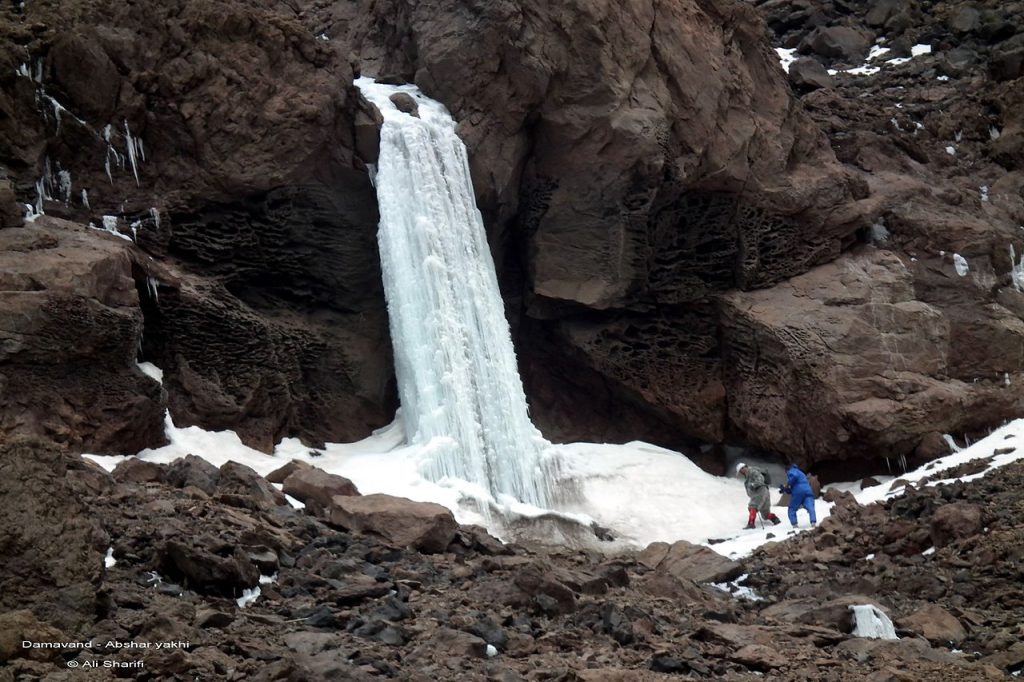
Yakhi Waterfall, aptly named from the Farsi word for “icy,” is a breathtaking natural wonder located in Amol City, Mazandaran Province. This unique waterfall remains frozen almost throughout the year, creating an awe-inspiring icy cascade against the rugged backdrop of Mount Damavand. Standing at an impressive elevation of 5,100 meters, Yakhi Waterfall towers 70 meters high and spans 3 meters in width, making it a striking feature in the landscape. The constant trickle of water that freezes upon descent adds layers to this icy formation, enhancing its grandeur with each passing season.
The allure of Yakhi Waterfall lies not only in its perpetual frozen state but also in its majestic surroundings. Nestled near the southern part of Mount Damavand, the waterfall offers a serene escape for adventurers and nature enthusiasts alike. The high altitude and frigid temperatures contribute to its year-round frozen appearance, making it a rare and captivating sight. Visitors to Yakhi can marvel at the sheer ice walls, explore the nearby Dood Kooh Mountains, and experience the tranquil beauty of one of the most unique waterfalls in Iran.
Shir Abad Waterfall
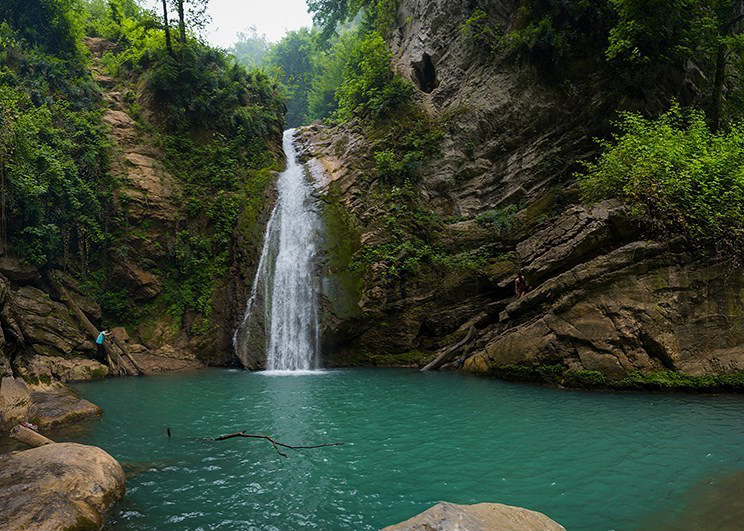
Let’s see one of the other best waterfalls in Iran! Nestled in the verdant embrace of Golestan Province, Shir Abad Waterfall stands as a testament to nature’s artistry. This awe-inspiring spectacle, located just 7 kilometers south of Khanbebin in the Fenderesk district, is a mesmerizing staircase of water, comprising 12 distinct cascades that tumble down the slopes of the majestic Alborz Mountains. The crown jewel of this aquatic masterpiece is a breathtaking 30-meter drop that plunges into a deep, crystal-clear pool, creating a natural amphitheater of mist and roaring water.
Shir Abad isn’t just a feast for the eyes; it’s a gateway to adventure. The surrounding area, aptly named Shir Abad Park, is a tapestry of dense jungles, hidden caves, and pristine streams that beckon to nature enthusiasts and thrill-seekers alike. This natural wonderland has earned Golestan the moniker “land of waterfalls,” with Shir Abad joining the ranks of other renowned cascades like Kaboudval, Golestan, and Ziyarat. As the third natural site in the province to receive heritage status, Shir Abad Waterfall not only promises an unforgettable experience for visitors but also stands as a protected treasure, ensuring its pristine beauty will enchant generations to come.
Sangan Waterfall
Sangan Waterfall, located just outside Sangan Village in the northwest of Tehran, is one of the stunning natural waterfalls in Iran that offers visitors a unique experience throughout the year. This impressive waterfall, standing at approximately 50 meters high, is nestled in the picturesque Central Alborz Mountains, making it easily accessible from Tehran via Kan Road.
In winter, Sangan Waterfall transforms into a breathtaking ice sculpture. As water drips down the face of the cliff, it freezes, creating a massive ice stalagmite at the base that can reach up to 40 meters in height. While some adventurous souls attempt to climb this icy formation, it’s generally discouraged due to the risk of falling ice from above. Spring and autumn are arguably the best times to visit, as heavy rains during these seasons ensure a powerful and impressive flow of water cascading down the rocky face. However, visitors should be aware that during the summer months, reduced rainfall can significantly diminish the waterfall’s volume, altering its appearance and impact.
Asiab Kharabeh Waterfall
Located in the picturesque landscapes of East Azerbaijan, just 27 kilometers from Hadishahr city, lies the enchanting Asiab Kharabeh waterfall. Also known as Kharaba Dayirman or “The Destroyed Mill,” this natural wonder is a testament to the raw beauty of waterfalls in Iran. The waterfall’s crystal-clear waters originate from the Kiamaky mountain springs in the western Dyzmar region of Arasbaran, cascading down in a series of breathtaking falls that create a mesmerizing spectacle. The site’s unique charm is further enhanced by the lush fig trees that surround the spring, their roots intertwined with the ancient stones that once formed a bustling mill.
As visitors approach the falls, they’re greeted by a verdant valley that stands in stark contrast to the typically hot climate of the Jolfa border region. The waterfall’s walls, adorned with a tapestry of moss and aquatic plants, create a living canvas that changes with the seasons. This natural artistry, combined with the soothing symphony of rushing water, has made Asiab Kharabeh a haven for eco-tourists and nature enthusiasts. The ruins of the old mill, from which the site derives its name, add a touch of historical intrigue to the already captivating landscape. Whether you’re seeking a peaceful retreat or an adventure in nature’s playground, Asiab Kharabeh offers a unique and unforgettable experience in the heart of East Azerbaijan.
Ganjnameh Waterfall
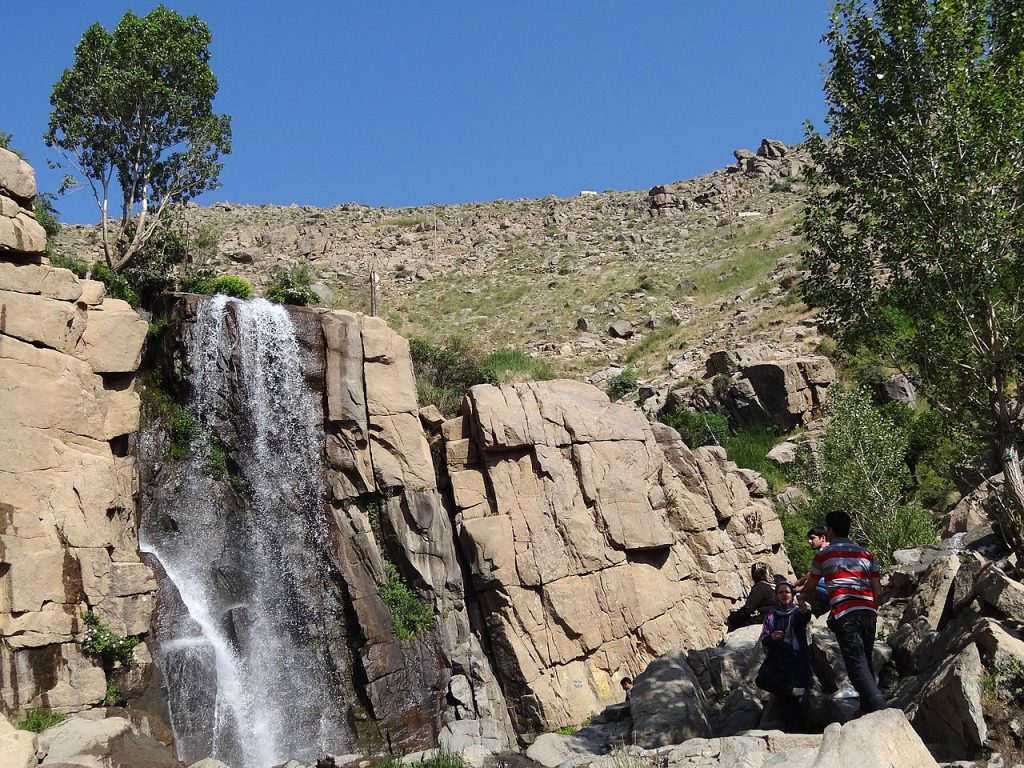
Nestled in the scenic Abbas Abad Valley of Mount Alvand, Ganjnameh Waterfall stands as a testament to both natural beauty and historical grandeur. This 12-meter-high waterfall creates a stunning landscape that captivates visitors year-round. Whether it’s the vibrant blossoms of spring, the lush greenery of summer, the kaleidoscope of autumn colors, or the icy elegance of winter, each season offers a unique spectacle. As one of the most beautiful waterfalls in Iran, it is conveniently located near the famous Ganjnameh Inscriptions, making it a perfect spot for those seeking both adventure and a glimpse into ancient Persia.
The Ganjnameh Inscriptions, carved into the rock face near the waterfall, are a significant historical site featuring trilingual cuneiform texts from the Achaemenid era. These inscriptions, commissioned by King Darius the Great and his son Xerxes, serve as a tribute to Ahuramazda, the Zoroastrian god, and highlight the importance of the area in ancient times. The inscriptions, written in Old Persian, Elamite, and Babylonian, have been preserved remarkably well, thanks to protective measures taken centuries ago. Visitors to Ganjnameh can enjoy a day filled with rock climbing, ice climbing, and photography, all while soaking in the rich cultural heritage that surrounds this majestic wonder as one of the top waterfalls in Iran.
Semirom Waterfall
In the southern reaches of Isfahan Province, Semirom Waterfall stands as a captivating natural wonder and one of the most eye-catching waterfalls in Iran, drawing visitors with its stunning beauty and serene ambiance. Located a short distance from the city of Semirom, this waterfall cascades down from a height of 35 meters, though on rare occasions, it can reach an impressive altitude of over 70 meters. The water originates from the springs of the upland heights, gushing out from the top of a massive rocky boulder, creating a mesmerizing spectacle against the backdrop of rugged mountains and lush greenery.
At the foot of this magnificent cascade, visitors will find a spacious area adorned with vibrant vegetation, offering a perfect spot to relax and immerse in the natural beauty. The cool, refreshing climate of the area, even during the hottest months, makes it an ideal retreat for nature lovers and adventurers seeking a respite from the heat. The sound of the cascading water, combined with the fresh mountain air, creates a tranquil atmosphere that soothes the soul. Whether you’re hiking through the trails, picnicking by the waterfall, or simply soaking in the serene surroundings, Semirom Waterfall offers an unforgettable experience that captures the essence of Iran’s breathtaking landscapes.
Sefid Waterfall
Waterfalls in Iran have more to offer! Nestled in the heart of Lorestan province, the magnificent Sefid Waterfall stands as a testament to nature’s grandeur. Soaring to an impressive height of over 69 meters, this cascading wonder ranks among the highest waterfalls in Iran, creating a breathtaking spectacle against the backdrop of the rugged Zagros Mountains. The waterfall’s pristine waters originate from mountain springs and melting ice caps, tumbling down with raw power before merging with the Rudbar River and eventually finding their way to the mighty Dez River.
The journey to Sefid Waterfall, located about 50 kilometers southeast of Aligudarz city, is an adventure in itself. As visitors traverse the winding paths, they’re greeted by a lush tapestry of vegetation, with stately walnut and oak trees standing sentinel along the way. This verdant landscape not only enhances the beauty of the trek but also provides a cool, refreshing atmosphere even during the warmest months. Known locally as “O Asbideh” or the “White Horse,” the waterfall earns its moniker from the frothy white appearance created as water crashes against the rocks, offering a mesmerizing sight that captivates all who witness its splendor.
FAQs about Waterfalls in Iran
Q1: What is the most beautiful waterfall in Iran?
A1: Shevi Waterfall in Khuzestan Province is the largest natural waterfall in the Middle East and one of the most beautiful in Iran. There’s also Ortokand Waterfall and Akhlamad Waterfall in Khorasan Razavi, and Margoon Waterfall and Tarom Waterfall in Fars.
Q2: Does it snow in Iran?
A2: Iran has a varied climate. In the northwest, winters are cold with lots of snow and temperatures below freezing. Spring and fall are fairly mild, while summers are dry and hot.
Q3: What is the climate in Iran?
A3: Iran has weather that changes with the seasons. It’s one of the few places where you can experience all four seasons – spring, summer, fall, and winter – in different parts of the country at the same time, all year round. No matter where you are in Iran, you can find examples of the four seasons happening concurrently.
Q4: What makes Iran unique?
A4: Iran has a long history of learning and scholarship. This has led to a very rich culture, with great art, literature, poetry, music, food, and architecture. Ancient Iranian thinkers wrote important books on philosophy and medicine. An Iranian mathematician even invented algebra.
Q5: Are there wild animals in Iran?
A5: Iran has a diverse range of wildlife. Animals like leopards, bears, hyenas, wild pigs, ibex, gazelles, and mouflons live in the wooded mountains. Jackals and rabbits are common in the interior regions. Wild donkeys live in the kavīrs (salt deserts). Cheetahs and pheasants are found in the Caspian area, and partridges can be seen in many parts of the country.
Last Words: Explore the Best of Waterfalls in Iran with a Customized Tour
Iran has many beautiful waterfalls that attract visitors. The soothing sound and sight of the cascading waterfalls in Iran create a peaceful, relaxing atmosphere, allowing people to escape the heat and stresses of daily life. These waterfalls can be found across Iran, from the green northern regions to other diverse areas. Each waterfall has its own special charm and beauty.
If you want to truly experience the most stunning waterfalls in Iran, it’s best to plan your trip through Customized tours. Iran tours and travel packages offered by companies like To Iran Tour are excellent options. We employ knowledgeable local guides and work closely with travelers to craft the perfect Iran experience. To Iran Tour strives to create Iran Tours that showcase the country’s natural wonders, including its magnificent waterfalls in Iran, in a way that suits your travel style.

